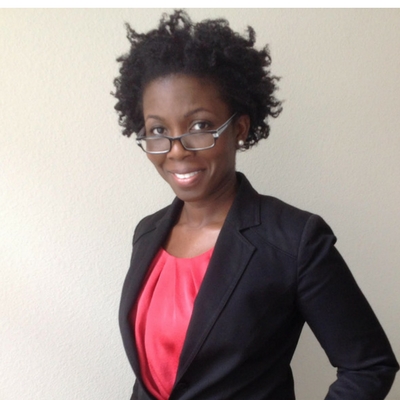Where do you currently live?
Atlanta, GA (metro area)
What is your current occupation?
Assistant Professor (Dept. of Theatre and Film Studies and the Institute for African American Studies at the University of Georgia)
What school did you attend while participating in NHD?
Manhattan High School, Manhattan, KS
What college did you attend?
A.B. Harvard University ( African American Studies; focus: history)
M.A. Ph.D., New York University/Tisch School of the Arts (Performance Studies)
Who were your teachers?
Mickey Bogart and Crystal Johnson
What years and in what category did you participate in NHD?
1996, Senior Individual Performance
What are a few of your favorite or defining moments from your NHD experience?
Over 20 years ago I had no idea what National History Day was. Yet, not a single day has passed since I first heard about this program that I have not felt its effect. I remember the day in 1995 at Manhattan High School when my A.P. US History teacher Mickey Bogart walked into class and told us that we would create class projects using the guidelines from this unknown competition called National History Day; and if we wanted to, we would have the option of entering our projects in to the actual contest. That year’s theme was “Taking a Stand in History”. I was so moved by that theme that I went home and asked my mother Abenaa Ghartey-Tagoe if she had any ideas as to what I could research. She brought out an old historical comic book from our family library that was a compilation of different little known tales from the past. The last story was that of Joseph Cinqué and the Amistad captives. This was before Steven Spielberg and Debbie Allen made the Hollywood film, Amistad. As I flipped through the pages of that colorful comic book, I was mesmerized by the tale of a group of Africans who were kidnapped from their homeland in 1839, rebelled on a slave ship and then through a whirlwind of events ended up being defended by former U.S. President John Quincy Adams before our U.S. Supreme Court. I could not believe that universities like Morehouse College where Martin Luther King, Jr. attended were created by the very same Americans who had championed for the release of the Africans. And, I thought to myself: Why haven’t I heard this story before? Why has it not been told? I created my initial performance just for my in-class winter project, not knowing whether or not I should enter the actual contest. My whole world changed when a student teacher named Crystal Johnson, who just so happened to be a former NHD alum, came into our class for the spring semester. Her enthusiasm for National History Day—of researching her topic and going to Nationals was quite contagious. She forever changed my life when she put that enthusiasm into action—taking the time to encourage me and my classmates; and essentially modeling for us the exhilaration one feels when they do this little thing called “research.” I didn’t know that I could find newspaper articles from the 1800’s or that John Quincy Adams kept a diary and I could read its pages; or court cases from the Amistad Incident had transcripts. However, Crystal Johnson opened my world to the past and I was hooked. For the next several months, I immersed myself in the research of my topic; like a treasure hunt, the more I found, the more digging I wanted to do. Those feelings were a major turning point for me. I was not obsessed with the thought of winning. I did not even know what prizes existed beyond placing 1st, 2nd, or 3rd. Rather my focus was to give justice to the story of the Amistad captives and to educate every audience member about the legacy of the Amistad Incident. My conviction and goal were simple: I wanted to tell the story as the captives themselves would if they could speak today. When I came to nationals, that was at the forefront of my mind. I remember like yesterday how I felt when I accomplished that goal—final round, senior individual performance in The Atrium of that Stamp Student Union. At the end of the performance—after I proclaimed Joseph Cinqué took a stand for freedom!”—I collapsed into tears into the arms of my mother, Crystal Johnson, and the best team of supporters from Manhattan, KS. I felt and still feel that Joseph Cinqué, the Amistad captives, John Quincy Adams and countless others who pursued justice in the Amistad case—and whose story had been entrusted to me—approved of my efforts. My other defining moment is the gratitude I still have for those who helped me in my NHD journey. I think of my mother; my teachers Mickey Bogart and Crystal Johnson; Joan Maynard – the illustrator of that old historical comic book about the Amistad and who is no longer with us today but with whom I was blessed to spend time during her later years in life; Mark Adams, the state coordinator who tirelessly worked for Kansas to participate in NHD; the Schottler Family—who would give rides to me and my mother from the contest site back to the hotel; Uniontown High School from Uniontown, Kansas under teacher Norm Conard who adopted me into their high school group and allowed me to tagalong on their trips to Planet Hollywood and to meet our congressional representatives; the Iowa families who let me stay with them in the NHD dorms one year; Board Members like Ted Prasse who graciously seeks to connect all of us together; the judges who gave great advice; Executive Director Cathy Gorn, the national staff, and volunteers who happily do this tremendous work; and so many more people who transform the lives of every NHD participant.
How did NHD help you after high school?
NHD gave me the career I am doing now: Grown Up History Day. I practice and study history on the stage and screen (film and television), creating artistic works based on archival research. As a professor at the University of Georgia, I bridge the worlds of academia and arts/entertainment—also, having worked for the National Endowment for the Humanities, National History Day, Inc., and A&E® Networks/The History Channel (THC). Everything I am doing now directly comes from my incredible NHD experience and the skills I acquired while participating.
What recognition did you receive for participating in NHD?
1st Place in Performance and the Case Western Reserve University Scholarship
Did you do anything with your NHD project or research after the contest year?
I performed in several venues, including the Keel Laying Ceremony for (1) the Amistad vessel at Mystic Seaport Museum in Mystic, CT, (2) the National Archives (Archives II), (3) national conferences, (4) clubs that donated funding for me to attend nationals, and (5) several local classrooms to inspire other students to do NHD. In 1999, I spent a summer at Mystic Seaport Museum as a Visiting Scholar and Actor co-directing and co-creating with Derron Wood of Flock Theater an original dramatic presentation of the 1839 Amistad Incident as part of the Amistad exhibit and ship replica on the Mystic Seaport Museum grounds.
What has kept you busy since your days as an NHD student? Any particular challenges, stories, or achievements?
My creative research has appeared nationally and internationally at universities, conferences, and in academic journals; and has garnered numerous awards including a $45,000 Innovative Seed Grant (University of Colorado Boulder), a Mellon Postdoctoral Fellowship, a Ford Foundation Fellowship and other fellowships from the American Philosophical Society and the Mustard Seed Foundation. In 2006, my educational work for THC’s Peabody-award winning documentary Save Our History: Voices of Civil Rights received the Beacon Award, cable television’s highest honor for public affairs. My current projects are an historical musical about black performers in the 1901 world’s fair entitled, At Buffalo, and a book about the relation between laughter and the American slave experience, entitled Laughing after Slavery: The Performances and Times of Laughing Ben Ellington. For more information about At Buffalo, see: www.atbuffalomusical.com. I also judge and assist the national staff virtually every year at nationals!
Is there anything else that you would like to share about your NHD experience?
NHD was an amazing experience and is something I have carried with me for years. Giving back by teaching others and volunteering to judge has been equally rewarding. I would encourage all alumni, family members and friends who supported us to get involved in their areas to help foster the next generation of historians.


